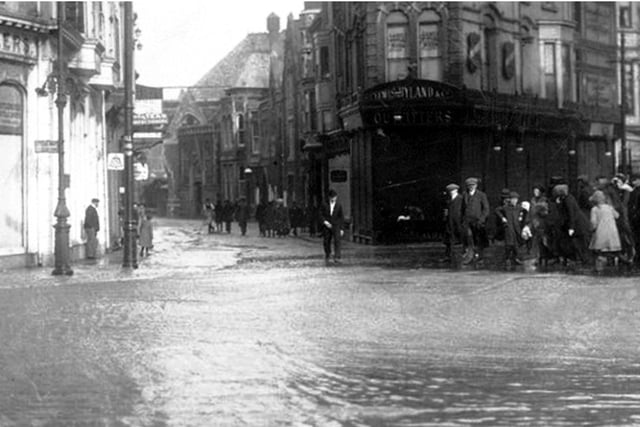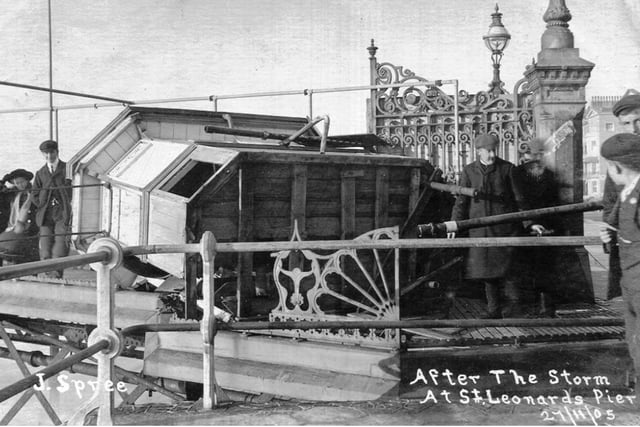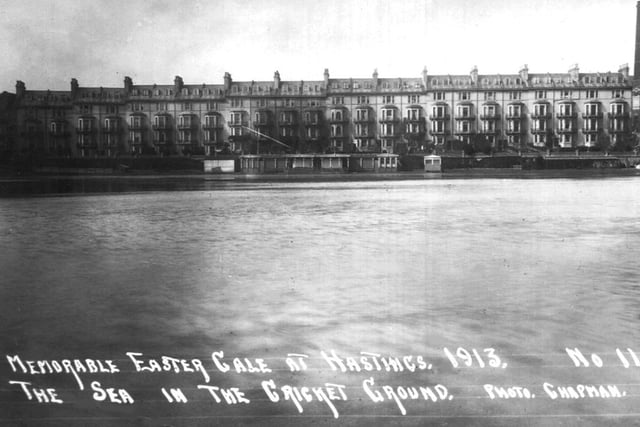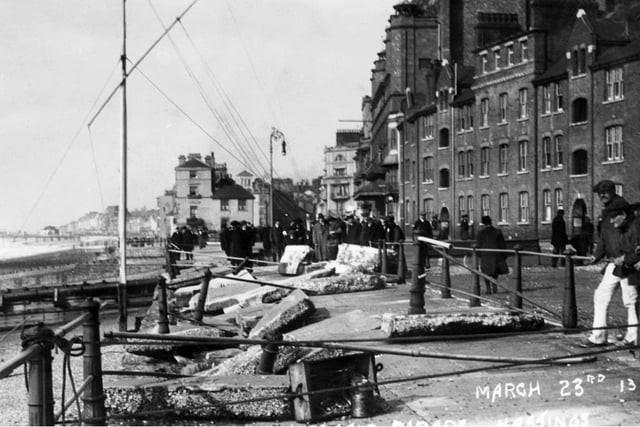He writes: The disastrous flooding of the town centre on January 15/16 came as no surprise, given the history of bad weather in Hastings, and the known vulnerability of the Priory Meadow.
Next month sees the 110th anniversary of an especially bad storm that flooded the Cricket Ground, as the Priory Meadow then was. That severe gale in 1913 was just one of several that caused extensive damage in the early years of the 20th century. St Leonards Pier took a particular serious battering by the sea on 27 November 1905, and the town centre was flooded a number of times, including on 22 October 1911.
It was the regular storm damage by the sea that led the borough engineer Sidney Little to carry out a mammoth full-scale rebuilding of almost the entire seafront in the 1930s. Today, in this era of global warming, it is clear that Little’s raising of the height of the promenade stopped the town centre suffering from repeated flooding like we saw in January. Hastings Council in 2016 could have rewarded Mr Little’s invaluable pioneering work by renaming the council office block Aquila House in Breeds Place after him, but instead councillors chose to call it after an Australian suffragette who had lived nearby.
Hastings had particularly bad luck with the weather in 1066. William of Normandy’s first attempt to invade England on 12 September had to be abandoned following storm damage to his fleet of ships. King Harold thought this gave him time to head north to repel the Viking invasion, but a sudden improvement in the wind direction gave William the chance to carry out an unchallenged invasion while Harold was still a long way away. The rest, as they say, is history.
The worst damage to Hastings and much of the South Coast was caused by what was probably a hurricane on 4 February 1287. This destroyed the original town of Winchelsea, forcing it to relocate where it is now. There is no written record of how the storm damaged Hastings, but it is clear that the layout of the Old Town is the result of some form of town planning after 1287. The High Street and All Saints Street were laid out in parallel lines, and equidistant from the Bourne Stream running between them, and none of the buildings are earlier than 1300. Much, if not all, of the town of Hastings before 1287 probably lay under where the sea is today.
In 1597 the town’s newly-built harbour was destroyed by a severe gale, and never rebuilt. In January 1792 a very high tide and southerly gale flooded George Street and damaged many buildings and net shops on the seafront.
Have you read? Take a look inside this newly opened South American eatery and cocktail bar in Hastings

1. IMG_4604.jpg
Hastings town centre under water Photo: supplied

2. IMG_4603.jpg
Damage caused to St Leonards Pier Photo: supplied

3. IMG_4605.jpg
The sea flooded the cricket ground at Priory Meadow in the Easter storm of 1913 Photo: supplied

4. IMG_4606.jpg
A 1913 storm caused substantial damage to the promenade. Photo: supplied